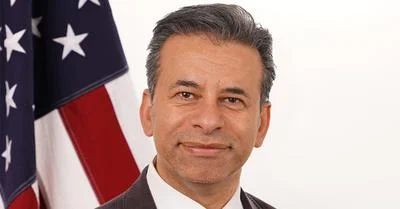MINNEAPOLIS - The Transportation Security Administration (TSA) has installed the latest security checkpoint screening technology over the past five weeks at six airports in Minnesota.
TSA has installed body scanners, also referred to as Advanced Imaging Technology (AIT) at Bemidji Regional Airport; Brainerd Lake Regional Airport; Duluth International Airport; Range Regional Airport in Hibbing; St. Cloud Regional Airport; and Thief River Falls Airport.
An AIT will be installed at Falls International Airport in International Falls later this summer. TSA has utilized AITs in the security checkpoints at Minneapolis-St. Paul International Airport and Rochester International Airport for the past few years.
The body scanner will be used to screen passengers for metallic and non-metallic items including weapons, explosives and other objects that can be concealed in layers of clothing. These new body scanners are second-generation AITs with a smaller footprint than earlier versions of the same type of machine that are in use at other U.S. airports.
“The addition of body scanners in the security checkpoints at these airports will upgrade the overall screening experience for passengers," said David McMahon, TSA Deputy Federal Security Director for Minnesota. “TSA is pleased to add this enhanced screening capability ahead of the busy summer travel season."
Every AIT unit operated by TSA is equipped with automated target recognition software, which is designed to enhance passenger privacy by creating a generic, computer generated outline that is identical for all travelers. If the body scanner detects a concealed item on the traveler, a yellow box appears on the generic outline. This box identifies where the TSA officer needs to conduct any follow-up screening.
The AIT unit is equipped with millimeter wave technology, which uses harmless electromagnetic waves to perform a single scan of the passenger. The technology meets all known national and international health and safety standards; the energy emitted by millimeter wave technology is 1,000 times less than the international limits and guidelines.
Because the body scanner is not a metal detector, many passengers including those with metal hips or knee replacements prefer to be screened by the AIT. In addition, the AIT does not use X-ray technology and it does not generate X-ray specific images of any traveler.
Below are some tips to help travelers prepare for screening through the body scanner:
* Remove all items - metallic and non-metallic - from pockets. Common items carried by passengers that should be removed include boarding passes, money including bills and coins, tissues, eye glasses, cell phones and keys.
* TSA recommends securing these items in carry-on luggage prior to entering the body scanner.
* When being screened by the body scanner, place both hands in the air, over the head. Stand as still as possible during the scan, which takes two to three seconds.
AITs are being used as the primary method of passenger screening for travelers departing Minnesota airports. In addition to the body scanners, TSA continues to incorporate random and unpredictable security measures both seen and unseen throughout the airport.
Source: U.S. Department of Homeland Security, Transportation Security Administration








